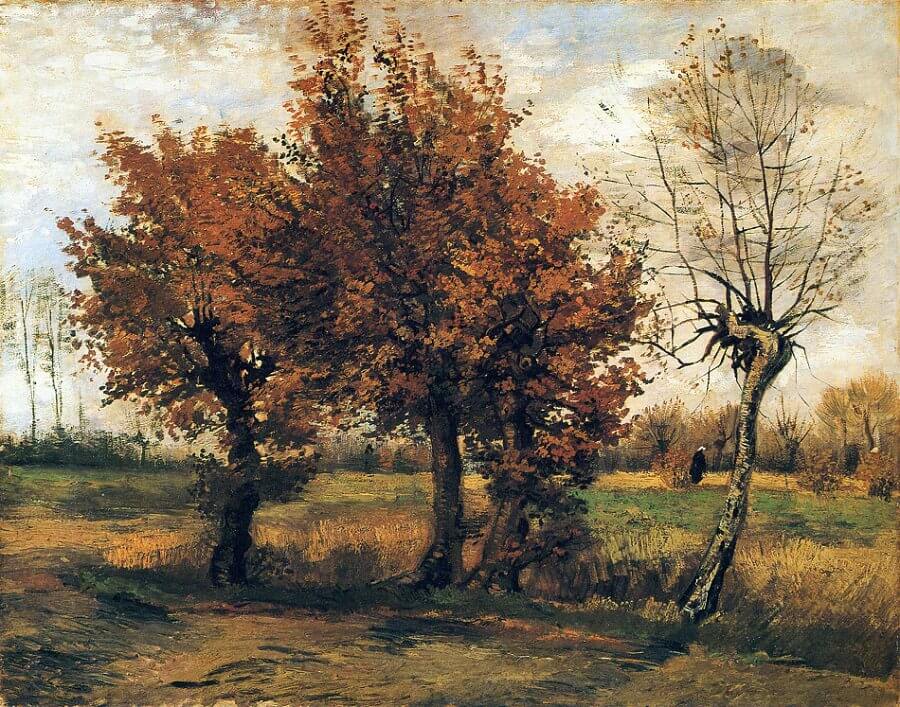Autumn Landscape with Four Trees, 1885 by Vincent Van Gogh

The autumn landscape from Otterlo provides striking evidence, when compared to Vincent's earlier work, of his increased skill in composition. This was not a new theme for him; in the spring of 1884 the artist had made a very detailed pen sketch in brown, entitled 'Behind the Hedges', which features, in a more modest role, the four trees behind the parsonage which form the subject of the canvas - the topographic similarity with the painting is striking. However, Van Gogh showed with this simple but powerful composition how much progress he had made in the intervening year and a half.
There can be no doubt that Vincent consciously wished to develop this motif more fully. This was already the fourth version of the group of trees, and he spent three days on it, a long time for an artist who worked so quickly. The canvas, he wrote to Theo, was moreover 'about the same size, for example, as that cottage and the country churchyard', the two prestigious canvases dating from May of that year. As he worked on this study in colour and tone he must have become increasingly conscious of its promise, because once it was finished he wanted, as he had done before with his Potato Eaters, to try out its effect in the elegant drawing room of his friend, the amateur painter Anton Kerssemakers. This autumnal study, too, he hung against the grey wallpaper and above the black and gilded furniture. 'Well, I never was so convinced that I shall make things which will do well, that I shall succeed in so calculating my colours that I shall command the desired effect', Van Gogh wrote subsequently with satisfaction. The study might not yet have been a painting fully fit for the art market, but he was on the right track. Kerssemakers, at any rate, was impressed by 'the soft, melancholy peacefulness of the combination of colours'. This in turn touched Van Gogh so that he could not sell the work, giving it instead to Kerssemakers, who had said: 'the thing is damned good'. Van Gogh did not share this view. He felt that he could learn more from the Old Masters using less paint to achieve a more 'vigorous' effect.




















